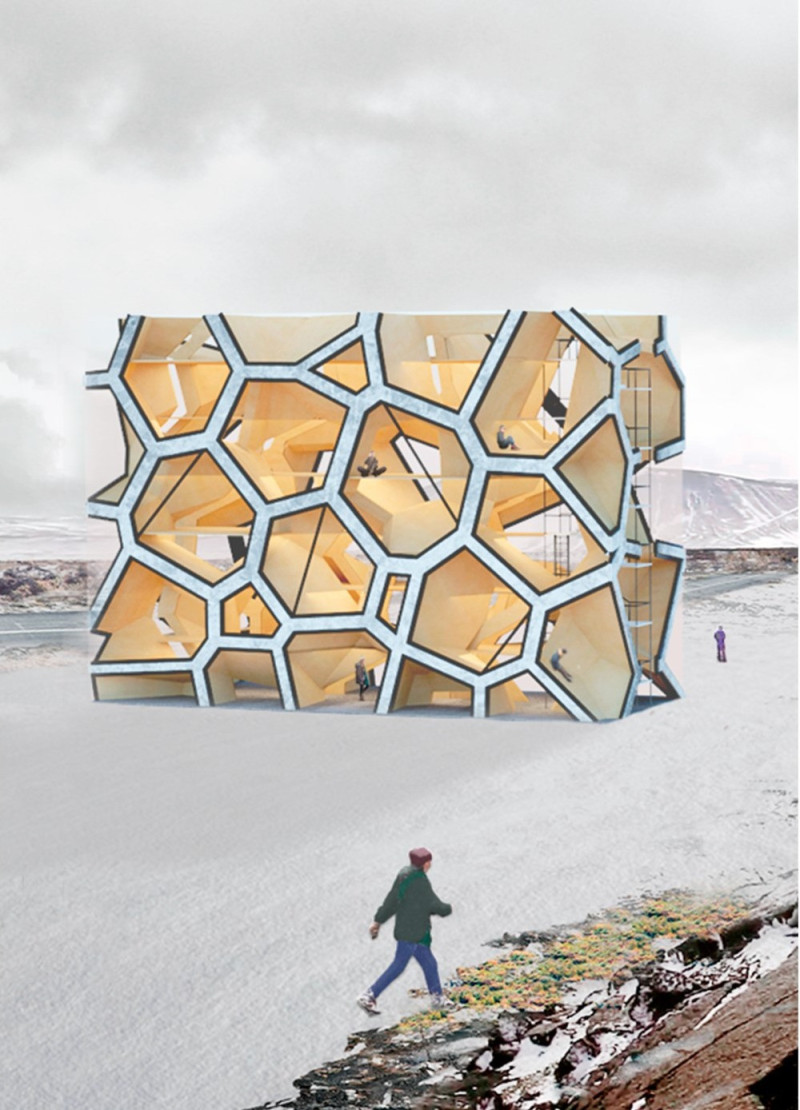5 key facts about this project
The Iceland Cave Tower stands as a thoughtful response to the growing number of tourists visiting the unique geological landscape of Iceland, specifically the Grjótagjá caves. The tower draws on the historical concept of mead halls from Early Medieval Scandinavia, creating a space that invites community and interaction. It aims to integrate with its setting while offering a flexible and engaging experience for visitors.
Conceptual Framework
The design celebrates the essence of the mead hall, reimagined for contemporary use. It seeks to create a welcoming and functional environment that exists in harmony with the natural world. The rectangular shape of the tower provides multiple levels, each serving different functions while maintaining a cohesive appearance that respects the landscape.
Interactive Features
Visitors to the upper level are treated to expansive views of the dramatic Icelandic scenery. With its uneven floors, slides, and climbing walls, this area encourages exploration and play. The focus is on making the visit an engaging experience, one that prompts people to interact with the architecture and the environment around them.
Restorative Spaces
The lower level of the tower captures the spirit of the caves, offering a cozy space for visitors to relax and enjoy hot drinks. Designed for comfort, it becomes a refuge from the cold Icelandic climate, emphasizing warmth and hospitality in an otherwise rugged landscape.
Geographical Context
This tower is strategically located along the divide of the American and European tectonic plates. This geological significance is reflected in the design, where distinct facades draw attention to the areas of exploration. This connection between the architecture and the landscape enriches visitors' understanding of the site's unique features.
The use of white steel on the exterior and wood on the interior further enhances the building's character. These materials allow the tower to present a modern appearance while ensuring a friendly atmosphere. The design encourages visitors to appreciate both the architecture and the surrounding natural beauty.

















































